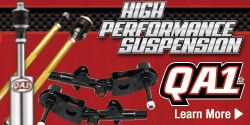JozefJ
Active Member
I'm looking to do a compression test on my 318 '73 dart sport.
Now I read all the basic steps, from removing all the spark plugs to unplugging the main coil wire and setting the carb to WOT.
Only.. is it neccessary to take extra steps to disable the fuel flow? And if so what tools do I need? Or does unplugging the coil take care of that?
Can anyone give me a detailed step by step guide on how to perform a compression test, so I can get into it with confidence?
Thanks for thinking along!
JJ
Now I read all the basic steps, from removing all the spark plugs to unplugging the main coil wire and setting the carb to WOT.
Only.. is it neccessary to take extra steps to disable the fuel flow? And if so what tools do I need? Or does unplugging the coil take care of that?
Can anyone give me a detailed step by step guide on how to perform a compression test, so I can get into it with confidence?
Thanks for thinking along!
JJ

















